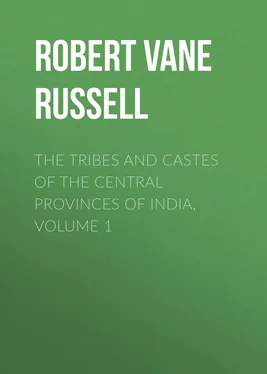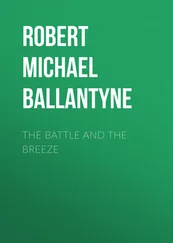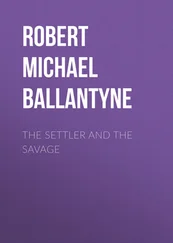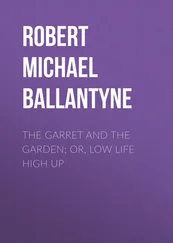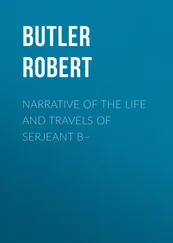Robert Vane Russell - The Tribes and Castes of the Central Provinces of India, Volume 1
Здесь есть возможность читать онлайн «Robert Vane Russell - The Tribes and Castes of the Central Provinces of India, Volume 1» — ознакомительный отрывок электронной книги совершенно бесплатно, а после прочтения отрывка купить полную версию. В некоторых случаях можно слушать аудио, скачать через торрент в формате fb2 и присутствует краткое содержание. Жанр: foreign_prose, История, foreign_edu, foreign_antique, на английском языке. Описание произведения, (предисловие) а так же отзывы посетителей доступны на портале библиотеки ЛибКат.
- Название:The Tribes and Castes of the Central Provinces of India, Volume 1
- Автор:
- Жанр:
- Год:неизвестен
- ISBN:нет данных
- Рейтинг книги:5 / 5. Голосов: 1
-
Избранное:Добавить в избранное
- Отзывы:
-
Ваша оценка:
- 100
- 1
- 2
- 3
- 4
- 5
The Tribes and Castes of the Central Provinces of India, Volume 1: краткое содержание, описание и аннотация
Предлагаем к чтению аннотацию, описание, краткое содержание или предисловие (зависит от того, что написал сам автор книги «The Tribes and Castes of the Central Provinces of India, Volume 1»). Если вы не нашли необходимую информацию о книге — напишите в комментариях, мы постараемся отыскать её.
The Tribes and Castes of the Central Provinces of India, Volume 1 — читать онлайн ознакомительный отрывок
Ниже представлен текст книги, разбитый по страницам. Система сохранения места последней прочитанной страницы, позволяет с удобством читать онлайн бесплатно книгу «The Tribes and Castes of the Central Provinces of India, Volume 1», без необходимости каждый раз заново искать на чём Вы остановились. Поставьте закладку, и сможете в любой момент перейти на страницу, на которой закончили чтение.
Интервал:
Закладка:
Rakshasa was another designation given to the tribes with whom the Aryans were in hostility. Its meaning is strong, gigantic or powerful, and among the modern Hindus it is a word for a devil or demon. In the Satapatha Brāhmana of the white Yajur-Veda the Rakshasas are represented as ‘prohibiters,’ that is ‘prohibiters of the sacrifice.’ 5 5 Wilson, ibidem , p. 99.
Similarly, at a later period, Manu describes Aryavarrta, or the abode of the Aryas, as the country between the eastern and western oceans, and between the Himalayas and the Vindhyas, that is Hindustān, the Deccan being not then recognised as an abode of the Aryans. And he thus speaks of the country: “From a Brāhman born in Aryavarrta let all men on earth learn their several usages.” “That land on which the black antelope naturally grazes, is held fit for the performance of sacrifices; but the land of Mlechchhas (foreigners) is beyond it.” “Let the three first classes (Brāhmans, Kshatriyas and Vaishyas) invariably dwell in the above-mentioned countries; but a Sūdra distressed for subsistence may sojourn wherever he chooses.” 6 6 Manu, ii. 17, 24.
Another passage states: “If some pious king belonging to the Kshatriya or some other caste should defeat the Mlechchhas 7 7 Barbarians or foreigners.
and establish a settlement of the four castes in their territories, and accept the Mlechchhas thus defeated as Chandālas (the most impure caste in ancient Hindu society) as is the case in Aryavarrta, then that country also becomes fit for sacrifice. For no land is impure of itself. A land becomes so only by contact.” This passage is quoted by a Hindu writer with the same reference to the Code of Manu as the preceding one, but it is not found there and appears to be a gloss by a later writer, explaining how the country south of the Vindhyas, which is excluded by Manu, should be rendered fit for Aryan settlement. 8 8 See Burnett and Hopkins, Ordinances of Manu, s.v.
Similarly in a reference in the Brāhmanas to the migration of the Aryans eastward from the Punjab it is stated that Agni the fire-god flashed forth from the mouth of a priest invoking him at a sacrifice and burnt across all the five rivers, and as far as he burnt Brāhmans could live. Agni, as the god of fire by which the offerings were consumed, was addressed as follows: “We kindle thee at the sacrifice, O wise Agni, the sacrificer, the luminous, the mighty.” 9 9 Wilson, Indian Caste , p. 170, quoting Weber, Indische Studien , i. 170.
The sacrifices referred to were, in the early period, of domestic animals, the horse, ox or goat, the flesh of which was partaken of by the worshippers, and the sacred Soma-liquor, which was drunk by them; the prohibition or discouragement of animal sacrifices for the higher castes gradually came about at a later time, and was probably to a large extent due to the influence of Buddhism.
The early sacrifice was in the nature of a communal sacred meal at which the worshippers partook of the animal or liquor offered to the god. The Dasyus or indigenous Indian races could not worship the Aryan gods nor join in the sacrifices offered to them, which constituted the act of worship. They were a hostile race, but the hostility was felt and expressed on religious rather than racial grounds, as the latter term is understood at present.
12. The Sūdra
M. Senart points out that the division of the four castes appearing in post-Vedic literature, does not proceed on equal lines. There were two groups, one composed of the three higher castes, and the other of the Sūdras or lowest. The higher castes constituted a fraternity into which admission was obtained only by a religious ceremony of initiation and investment with the sacred thread. The Sūdras were excluded and could take no part in sacrifices. The punishment for the commission of the gravest offences by a Brāhman was that he became a Sūdra, that is to say an outcast. The killing of a Sūdra was an offence no more severe than that of killing certain animals. A Sūdra was prohibited by the severest penalties from approaching within a certain distance of a member of any of the higher castes. In the Sutras 10 10 A collection of rules for sacrifices and other rites, coming between the Vedas and the law-books, and dated by Max Müller between 600–200 B.C.
it is declared 11 11 Wilson, Indian Caste , p. 182.
that the Sūdra has not the right (Adhikāra) of sacrifice enjoyed by the Brāhman, Kshatriya and Vaishya. He was not to be invested with the sacred thread, nor permitted, like them, to hear, commit to memory, or recite Vedic texts. For listening to these texts he ought to have his ears shut up with melted lead or lac by way of punishment; for pronouncing them, his tongue cut out; and for committing them to memory, his body cut in two. 12 12 Wilson, p. 184, quoting from Shrauta-sūtra of Kātyayana, 1. 1. 6.
The Veda was never to be read in the presence of a Sūdra; and no sacrifice was to be performed for him. 13 13 Manu, iv. 99; iii. 178.
The Sūdras, it is stated in the Harivansha, are sprung from vacuity, and are destitute of ceremonies, and so are not entitled to the rites of initiation. Just as upon the friction of wood, the cloud of smoke which issues from the fire and spreads around is of no service in the sacrificial rite, so too the Sūdras spread over the earth are unserviceable, owing to their birth, to their want of initiatory rites, and the ceremonies ordained by the Vedas. 14 14 Wilson, pp. 421, 422.
Again it is ordained that silence is to be observed by parties of the three sacrificial classes when a Sūdra enters to remove their natural defilements, and thus the servile position of the Sūdra is recognised. 15 15 Wilson, p. 187, quoting from Hiranyakeshi Sūtra.
Here it appears that the Sūdra is identified with the sweeper or scavenger, the most debased and impure of modern Hindu castes. 16 16 See article Mehtar in text.
In the Dharmashāstras or law-books it is laid down that a person taking a Sūdra’s food for a month becomes a Sudra and after death becomes a dog. Issue begotten after eating a Sūdra’s food is of the Sūdra caste. A person who dies with Sūdra’s food in his stomach becomes a village pig, or is reborn in a Sūdra’s family. 17 17 Wilson, p. 363, quoting from Smriti of Angira.
An Arya who had sexual intimacy with a Sūdra woman was to be banished; but a Sūdra having intimacy with an Arya was to be killed. If a Sūdra reproached a dutiful Arya, or put himself on equality with him on a road, on a couch or on a seat, he was to be beaten with a stick. 18 18 Wilson, Indian Caste , p. 195, from Hiranyakeshi Sūtra.
A Brāhman might without hesitation take the property of a Sūdra; he, the Sūdra, had indeed nothing of his own; his master might, doubtless, take his property. 19 19 Manu, viii. 417.
According to the Mahābhārata the Sūdras are appointed servants to the Brāhmans, Kshatriyas and Vaishyas. 20 20 Wilson, p. 260, quoting Mahābhārata, viii. 1367 et seq.
A Brāhman woman having connection with a Sūdra was to be devoured by dogs, but one having connection with a Kshatriya or Vaishya was merely to have her head shaved and be carried round on an ass. 21 21 Wilson, p. 403, quoting from Vyavahāra Mayūkha .
When a Brāhman received a gift from another Brāhman he had to acknowledge it in a loud voice; from a Rājanya or Kshatriya, in a gentle voice; from a Vaishya, in a whisper; and from a Sūdra, in his own mind. To a Brāhman he commenced his thanks with the sacred syllable Om; to a king he gave thanks without the sacred Om; to a Vaishya he whispered his thanks; to a Sūdra he said nothing, but thought in his own mind, svasti , or ‘This is good.’ 22 22 Wilson, p. 400, from Parāshara Smriti.
It would thus seem clear that the Sūdras were distinct from the Aryas and were a separate and inferior race, consisting of the indigenous people of India. In the Atharva-Veda the Sudra is recognised as distinct from the Arya, and also the Dasa from the Arya, as in the Rig-Veda. 23 23 Wilson, p. 140, quoting from Atharva Veda , iv. 32. 1.
Dr. Wilson remarks, “The aboriginal inhabitants, again, who conformed to the Brāhmanic law, received certain privileges, and were constituted as a fourth caste under the name of Sūdras, whereas all the rest who kept aloof were called Dasyus, whatever their language might be.” 24 24 Wilson, p. 211.
The Sūdras, though treated by Manu and Hindu legislation in general as a component, if enslaved, part of the Indian community, not entitled to the second or sacramental birth, are not even once mentioned in the older parts of the Vedas. They are first locally brought to notice in the Mahābhārata, along with the Abhīras, dwelling on the banks of the Indus. There are distinct classical notices of the Sūdras in this very locality and its neighbourhood. “In historical times,” says Lassen, “their name reappears in that of the town Sudros on the lower Indus, and, what is especially worthy of notice, in that of the people Sudroi, among the Northern Arachosians.” 25 25 Wilson, Indian Caste , referring to Ptolemy, vii. 1. 61 and vi. 120. 3.
Интервал:
Закладка:
Похожие книги на «The Tribes and Castes of the Central Provinces of India, Volume 1»
Представляем Вашему вниманию похожие книги на «The Tribes and Castes of the Central Provinces of India, Volume 1» списком для выбора. Мы отобрали схожую по названию и смыслу литературу в надежде предоставить читателям больше вариантов отыскать новые, интересные, ещё непрочитанные произведения.
Обсуждение, отзывы о книге «The Tribes and Castes of the Central Provinces of India, Volume 1» и просто собственные мнения читателей. Оставьте ваши комментарии, напишите, что Вы думаете о произведении, его смысле или главных героях. Укажите что конкретно понравилось, а что нет, и почему Вы так считаете.
